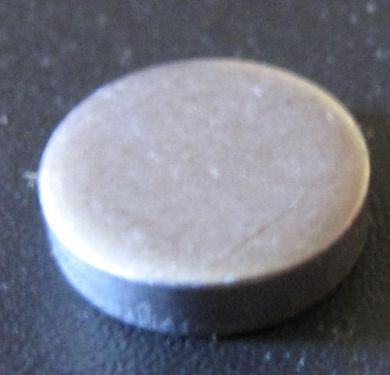an0br1
New
TL;DR: burst discs in recently hydro'd tanks were leaking. Is this to be expected?, and something I should be checking myself when I get tanks serviced?
I'm returning to diving after a long absence.
I recently took four Al 80's in to the local shop for hydros. Two of the tanks hadn't been used since ~2002 and had ~1500psi before I dropped them off at the shop. When I picked the four tanks up, the tech/service guy checked the pressure on all and said they were full, though I didn't see what the psi was.
A few days after bringing the tanks home I checked the pressure and found 2 were at 3300psi, 1 at 3200psi, and one at 2700psi. It's been a long time since I had a tank filled, but recalled tanks could be overfilled 10%, but maybe vague memory that that was only for steel ... I assumed maybe the 2700psi had been filled separately and got a hot fill.
A couple weeks later, used the two 3300psi tanks and had them refilled in Monterey over the weekend. Checked pressure on all tanks this morning and those refilled in Monterey were 2950psi, but the two tanks that were still unused were now down to 3000psi (from 32) and 2200psi (from 27). :-\ I dunked all the tanks in the bathtub this morning and found the 2200psi burst valve was leaking very steadily and the 3000psi leaking steadily but very very tiny bubbles.
Is _ANY_ leaking from the burst disc (threads) acceptable? The two that are leaking are Sherwood valves with exposed discs (vs. the two others not leaking that are recessed). Given the leaking tanks were at 1500psi after being unused for 20+ years can I make any assumptions that they were loosened during the hydro/visual inspection?
And is there any expectation that when you get a tank back from a visual inspection that it's safe/ready to use? I didn't pay attention to the valve o-rings before I dropped the tanks off (I did tighten down the first stage regulator tight when I checked the pressure before dropping off and didn't listen for hissing), but when I got them back and looked at the o-rings saw they were not fit for service at all (hard/brittle). Googling at that point it sounded like o-ring changes come with a "valve service" and I replaced them myself, but I would have expected them to point out the need to change them and offer the service.
I'm returning to diving after a long absence.
I recently took four Al 80's in to the local shop for hydros. Two of the tanks hadn't been used since ~2002 and had ~1500psi before I dropped them off at the shop. When I picked the four tanks up, the tech/service guy checked the pressure on all and said they were full, though I didn't see what the psi was.
A few days after bringing the tanks home I checked the pressure and found 2 were at 3300psi, 1 at 3200psi, and one at 2700psi. It's been a long time since I had a tank filled, but recalled tanks could be overfilled 10%, but maybe vague memory that that was only for steel ... I assumed maybe the 2700psi had been filled separately and got a hot fill.
A couple weeks later, used the two 3300psi tanks and had them refilled in Monterey over the weekend. Checked pressure on all tanks this morning and those refilled in Monterey were 2950psi, but the two tanks that were still unused were now down to 3000psi (from 32) and 2200psi (from 27). :-\ I dunked all the tanks in the bathtub this morning and found the 2200psi burst valve was leaking very steadily and the 3000psi leaking steadily but very very tiny bubbles.
Is _ANY_ leaking from the burst disc (threads) acceptable? The two that are leaking are Sherwood valves with exposed discs (vs. the two others not leaking that are recessed). Given the leaking tanks were at 1500psi after being unused for 20+ years can I make any assumptions that they were loosened during the hydro/visual inspection?
And is there any expectation that when you get a tank back from a visual inspection that it's safe/ready to use? I didn't pay attention to the valve o-rings before I dropped the tanks off (I did tighten down the first stage regulator tight when I checked the pressure before dropping off and didn't listen for hissing), but when I got them back and looked at the o-rings saw they were not fit for service at all (hard/brittle). Googling at that point it sounded like o-ring changes come with a "valve service" and I replaced them myself, but I would have expected them to point out the need to change them and offer the service.




